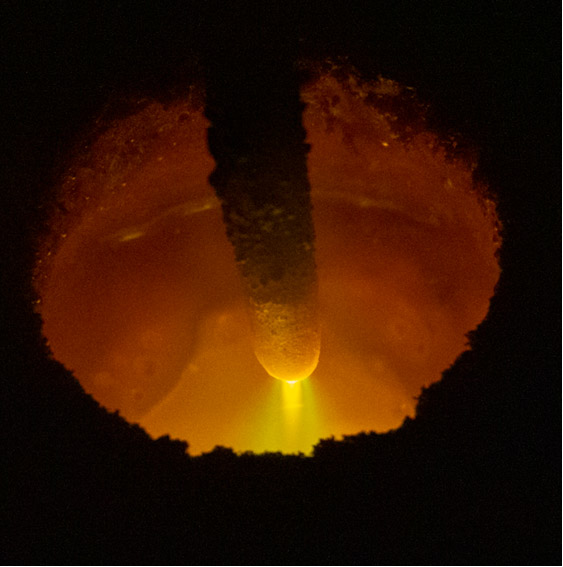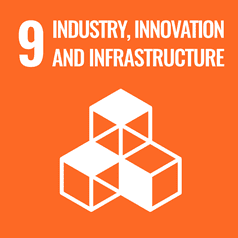Reducing Greenhouse Gas Emissions in Steel Making
Steel is a vital material for modern life, making the reduction of emissions during the steel making process essential in meeting future demand and promoting sustainable development across the globe. The steel industry is actively exploring strategies to improve its sustainability, with options including adopting more efficient technologies, utilising renewable energy sources, increasing the use of recycled materials, and unlocking the potential of novel methods to process lower grade ores.
While emissions reduction in the hard-to-abate steel industry is a global challenge, the locally available raw materials must be taken into account. The low emissions ironmaking and steel making processes must be suitable to process the iron ore produced and exported from Australia, which is the largest exporter of the commodity globally.
NIER’s Centre for Ironmaking Materials Research (CIMR) is at the forefront of innovation in sintering, cokemaking and blast furnace ironmaking processes, optimising the use of Australian iron ore and metallurgical coal, and finding ways to process and use Australian resources in more sustainable ways.
Associate Professor Tom Honeyands, Co-Director of the CIMR was recently a keynote speaker at the International Symposium on CO2-Lean Ironmaking Technology (COOLIT) 2023: Road to Green Steel, where he spoke to some of the innovative advancements in Australian ironmaking technology helping to utilise a wider range of iron ores.
The hot topic was their research project with BHP called Electric Smelting Furnace (ESF) for Alternate Hot Metal Production from Australian Iron Ores, showing how an ESF powered by renewable electricity is a potential greener alternative to the blast furnace. It is also a more flexible approach than Electric Arc Furnace technology, which is primarily designed for scrap processing and can only accept very high grade, scarce ores. Through the ESF production route, Australian iron ore is reduced to direct reduced iron using green hydrogen, then smelted in an ESF to produce hot metal equivalent to the blast furnace.
Electric smelting furnaces offer several advantages over traditional smelting methods, including the replacement of coal with electricity as an energy source, which can substantially reduce greenhouse gas emissions when generated by renewables, and produces a slag by-product which will be useful as a cement substitute, displacing the emissions normally generated in the production of cement.
Earlier this year BHP, in partnership with Hatch, and utilising research outcomes from CIMR, signed an agreement to design an ESF pilot plant with the aim of demonstrating a pathway to lower carbon dioxide (CO2) emissions intensity in steel production using iron ore from their Western Australia Iron Ore (WAIO) mining operations. This comes as BHP partners with researchers to explore pathways to help meet its decarbonisation goals, and deliver on the resource demands of the modern world while maintaining supply chain integrity.
Of the technology, BHP says “the ESF is capable of producing steel from iron ore using renewable electricity and hydrogen replacing coking coal, when combined with a Direct Reduced Iron (DRI) step. Estimates show that reductions of more than 80 per cent in CO2 emission intensity are potentially achievable processing Pilbara iron ores through a DRI-ESF pathway, compared with the current industry average for the conventional blast furnace steel route.”
With further development, this technology holds the promise of greater flexibility in input materials, thus overcoming some of the barriers to the adoption of lower emissions technologies. A flexible, cost-effective technology is a much-needed piece of the puzzle towards reducing greenhouse gas emissions in steel making.
Electric Smelting Furnace - Potential Benefits

- An Electric Smelting Furnace powered by renewable electricity is a potential greener alternative to the blast furnace
- Suitable for utilisation of medium grade ores, with very low yield losses
- Low metallisation DRI can be smelted, which may have advantages in DRI production
- Produces a hot metal equivalent suitable for existing downstream equipment
- Lower slag volume and potential usage of slag in the cement industry
Related news
- Launch of the School Students’ Statement on the Right to a Healthy Environment
- Funding boost to technology for lower emission steel
- Newcastle team on mission to improve childhood cancer outcomes
- Shanae’s passion for caring delivers her dream to work in health
- Food and nutrition degree serves Keren a rewarding career
The University of Newcastle acknowledges the traditional custodians of the lands within our footprint areas: Awabakal, Darkinjung, Biripai, Worimi, Wonnarua, and Eora Nations. We also pay respect to the wisdom of our Elders past and present.
